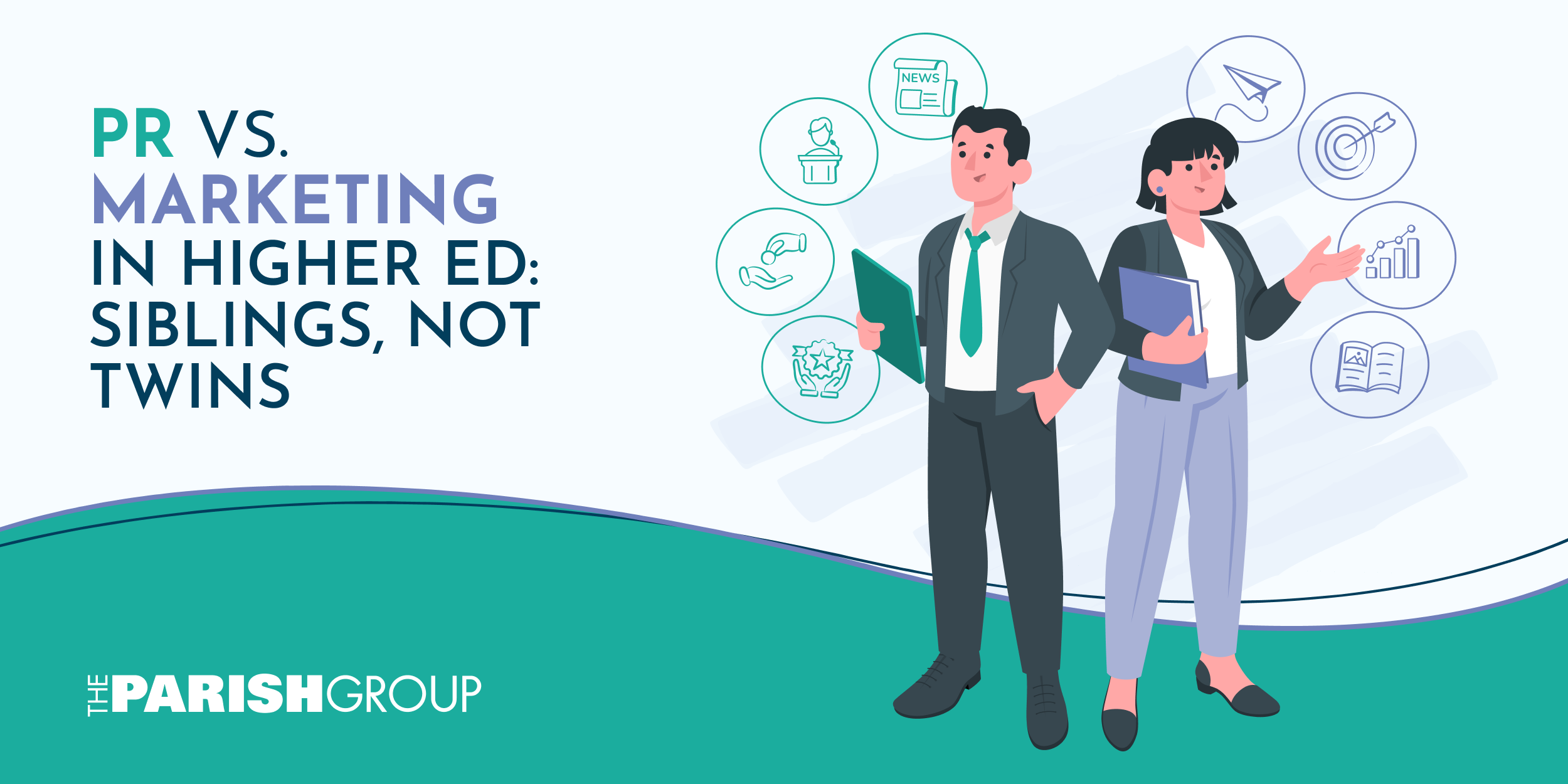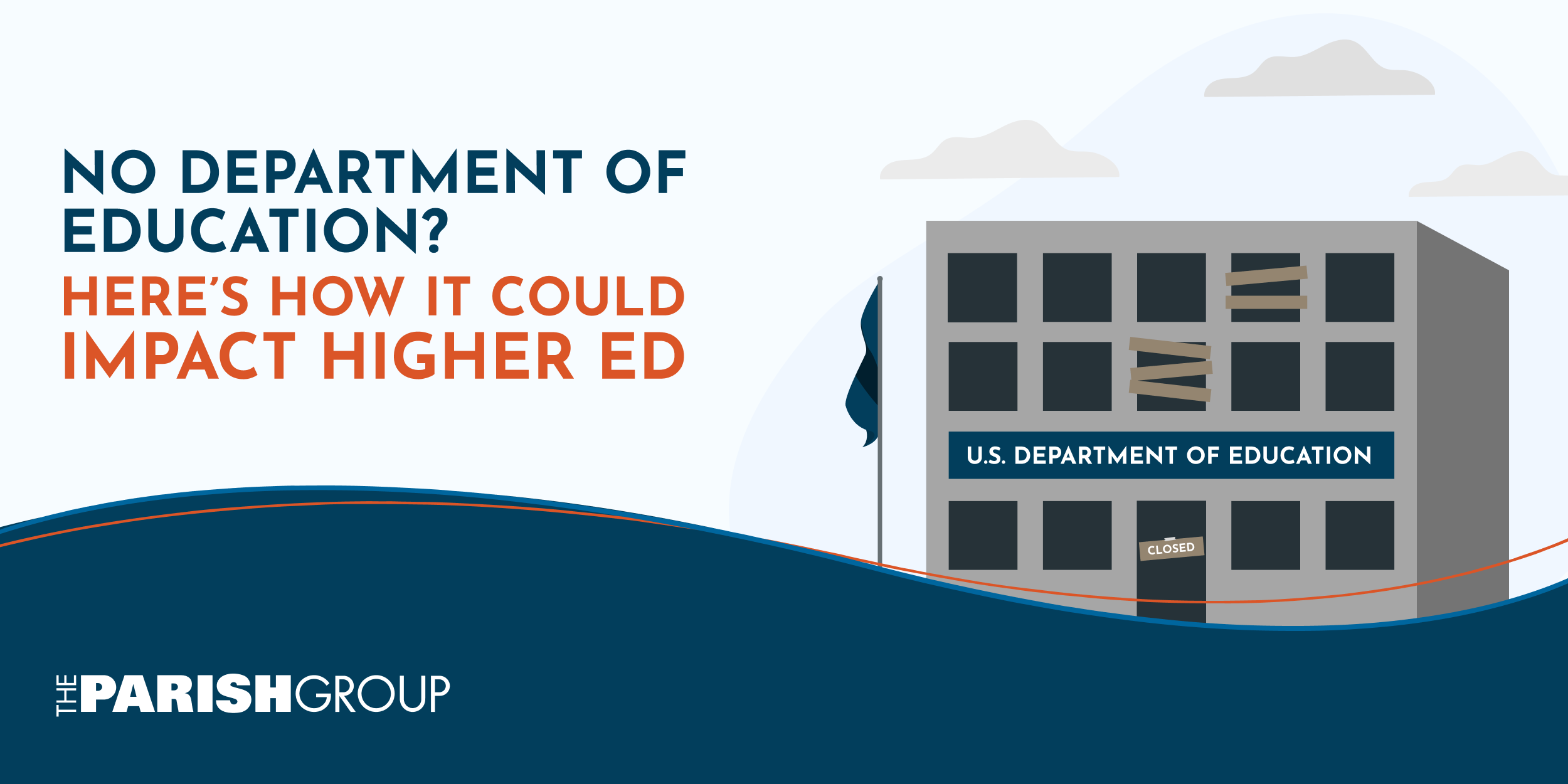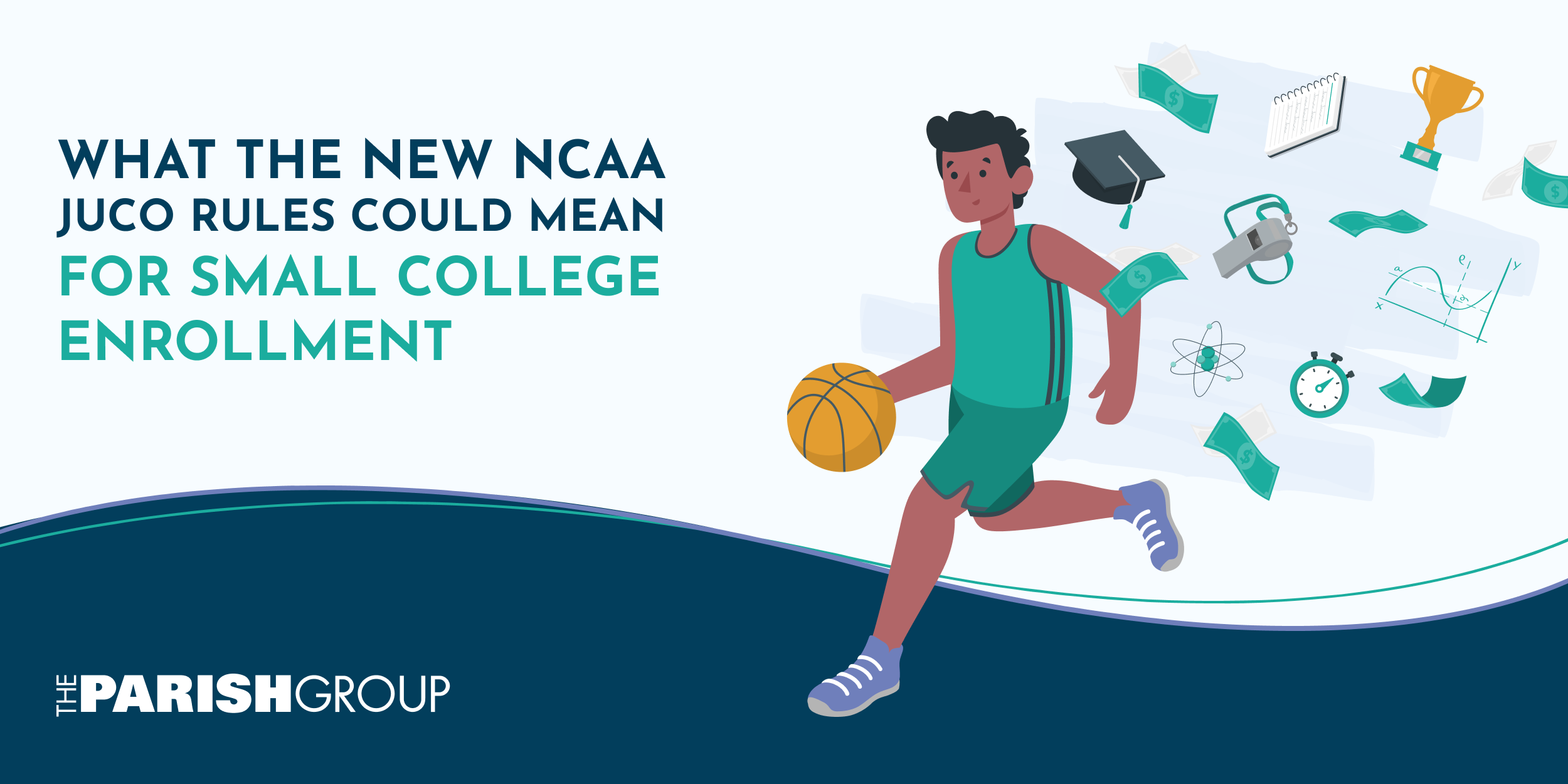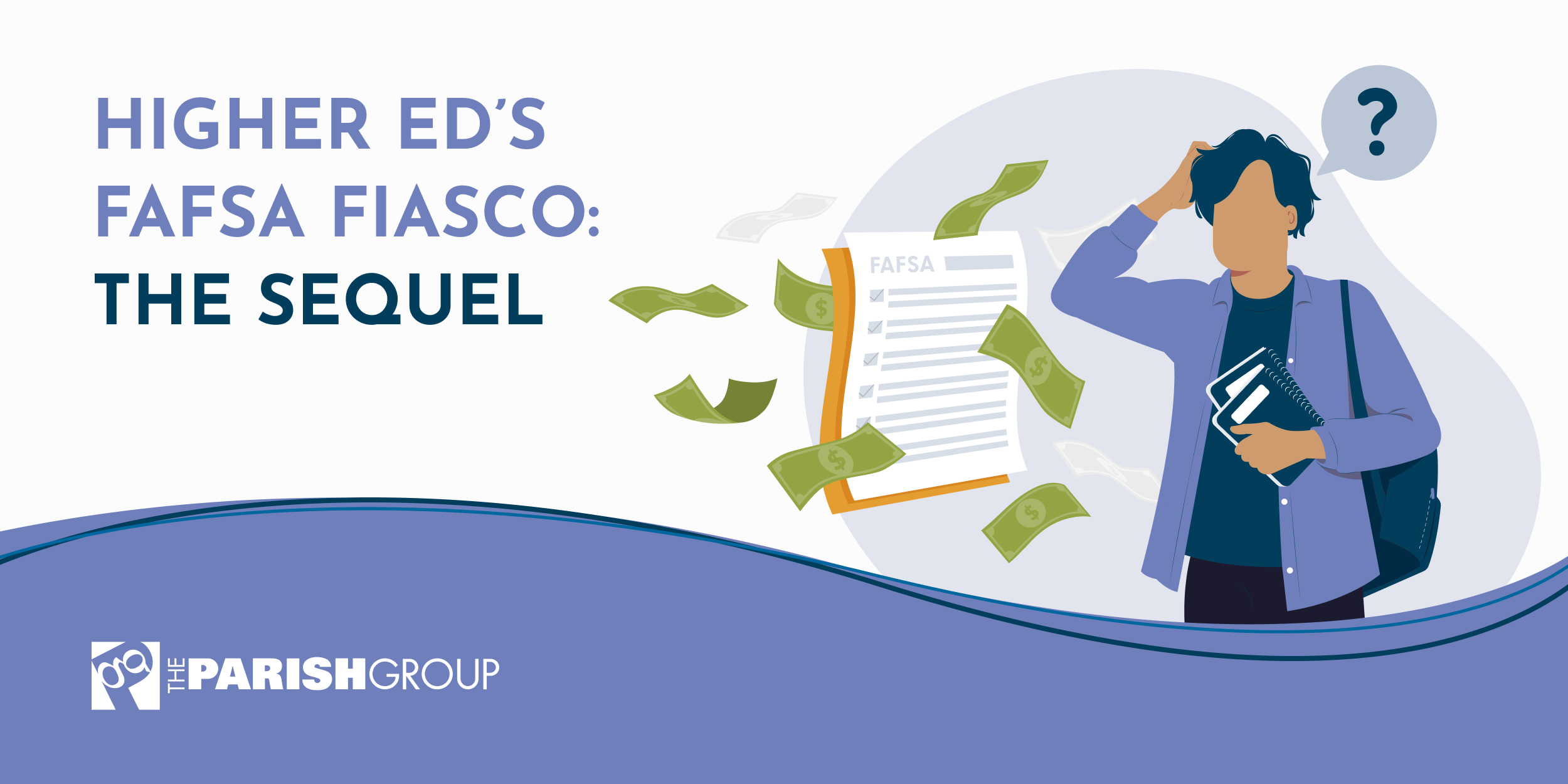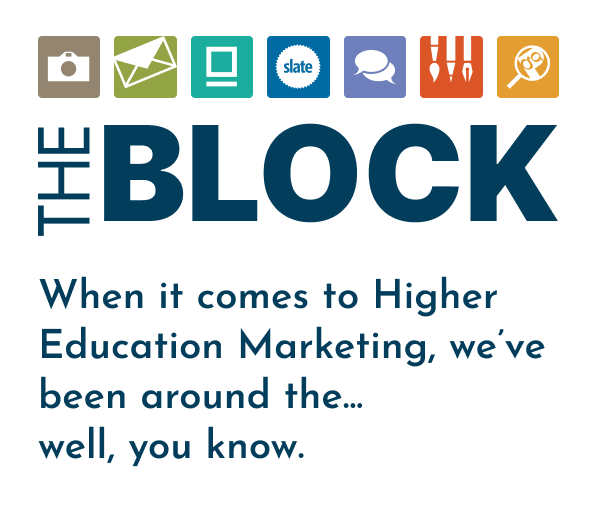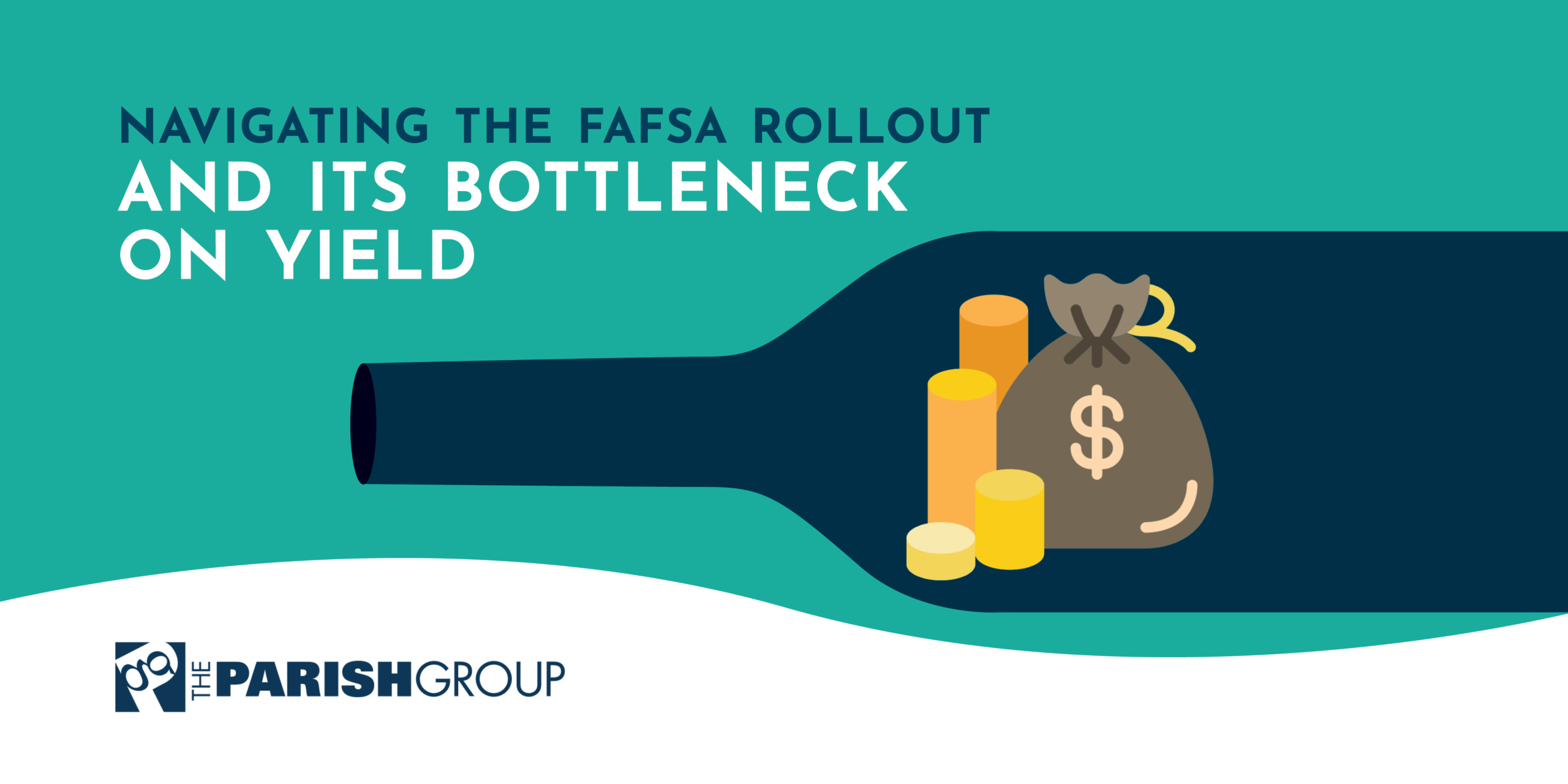
It’s no secret that financial aid is a top concern and priority for students applying to college. The cost of earning a secondary degree is skyrocketing, and the struggles of Gen X and millennials in paying off their student loans has made headlines and prompted presidential action.
In 2020, the FAFSA Simplification Act was passed and its aims were honorable: make it easier for students to apply and receive federal financial aid. The number of questions were reduced by half and the design meant to be more user-friendly.
But its rollout…was messy to say the least. And this delay will create a domino effect, all barreling towards yield.
How does the new FAFSA impact enrollment yield? What can we do to help prospective students?
FAFSA’s Bumpy Rollout
Of course, nothing is perfect the first time around. But the rollout of the 2024-2025 FAFSA came with lots of hiccups.
What was once available the October of the previous year now wasn’t set to go live until December. And the penultimate day of December at that.
Once live, the FAFSA form faced website crashes, maintenance, complaints from parents and students that supplied parent information wasn’t going through (just check the replies on FAFSA’s Twitter account). Then the Department of Education stated they needed to recalculate numbers to account for inflation.
And all of this confusion is happening to the class of 2024. You know, the same class that had the beginning of their high school careers upended by COVID? The ones that spent their 8th, 9th, and possibly 10th grade year from behind a computer screen? The first class impacted by the strike down of affirmative action?
Yeah, that class.
Being the guinea pig is never fun. It’s even less fun when it could impact your financial ability to go to college.
How This Will Impact Yield
When you start later, you’re likely going to finish later. The Department of Education recently released a statement that “institutions, higher ed agencies, and designated scholarship organizations will begin receiving batches of FAFSA information starting in the first half of March.” In past years, institutions had this information as early as October of the previous year.
“Will begin” being important here. Does this mean they’ll start receiving data at this time and throughout the month or will it all be released within a short period of time?
Regardless, this leaves colleges and universities a little under two months to finalize financial aid for students, and in turn, for students to make a decision by May 1.
This could be another hurdle for smaller, private colleges to jump over. A student applying to a state school and a private college may preemptively opt to go the cheaper, public route without knowing what their final financial aid package will look like at both institutions. And Sometimes that final aid number makes the private institution’s tuition less expensive than previously assumed.
Additionally, many state specific grants and scholarships rely on information of federally awarded aid to make their calculations. With some on a first-come first-serve basis, many students may miss out on state funds they’d previously qualify for.
Like many things in higher ed, lower income, minority, and or ESOL families will feel the impact of this the most.
What Enrollment Officers Can Do to Help
It may feel like our hands are tied. But there are avenues we can take to relieve the stress and pressure of these college-bound students and their families.
Schools should consider expanding their communication flows to include information about ‘25-’25 FAFSA.
Implementing segmented messaging for students, parents, and high school counselors will show great customer service. Show that you’re here to help them, that this is out of their hands, and you’ll work with families as soon as the government releases the data.
This communication will solidify your authority on the topic, establishing a relationship between you and the student/parent/counselor as the go-to for any questions, which may positively sway yield in your favor.
Time is of the essence here, so you don’t need to be flowery in your outreach. Use clear, simple language to deliver important information and provide updates from your institution where you can.
Another aspect to look at is May 1. The date has lost its luster in recent years, becoming more of a litmus test for how the rest of summer will shake out; however, some schools still treat May 1 as THE deadline.
Remember the tootsie pop commercials? Well, how many FAFSA delays does it take to move May 1?
Students may not have all the information they need to make an informed, confident decision by the first of May. As enrollment professionals, we need to be prepared for that.
NACAC released a statement to institutions urging them to extend the May 1 deadline. After all, the high school graduates of 2024 could use some reprieve. Maybe this is the year May 1 relinquishes its power.
How The Parish Group Can Support Your Enrollment Office
If you need help re-evaluating yield strategies to remedy the new system, The Parish Group is at your service. We offer financial aid consulting services and can help you create an integrated communication flow for talking to students, parents, and counselors about the FAFSA.
Our staff is made up of former Deans of Enrollment, Directors of Admissions, and enrollment experts with a combined 100 years of experience. The Parish Group has been in the enrollment management and higher ed game since the late 80s, and has successfully guided institutions through all the changes and fluctuations in higher ed for the past 37 years.
You don’t have to navigate this alone. Reach out at success@parishgroup.com or call our office at 828-505-3000.

